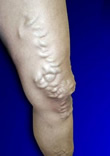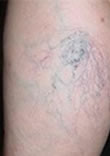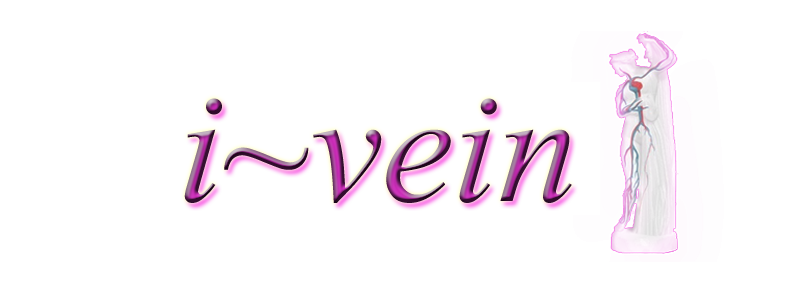Veins are vessels that transport blood to the heart. In healthy leg veins, one-way valves allow blood to move only in one direction: upstream towards the heart.
 When a valve fails to function, the blood can begin to pool in your legs and cause a variety of health problems including swollen ankles, blood clots, leg pain, spider veins, varicose veins, and even ulcers. When a valve fails to function, the blood can begin to pool in your legs and cause a variety of health problems including swollen ankles, blood clots, leg pain, spider veins, varicose veins, and even ulcers.
Arteries are blood vessels that bring the fresh oxygenated blood full of nutrients from the heart to the rest of the body. Veins are the blood vessels that are responsible for returning the blood without oxygen and nutrients back to the heart against gravity. In order to do this, when you walk, your leg muscles squeeze the deep veins of your legs and feet push the non-oxygenated blood back to the heart. In your veins there are one-way valves that are placed about one inch apart that keep blood flowing in the right direction. When your leg muscles relax, the valves inside your veins close. This prevents the backward flow of blood, back down the legs.
When your leg veins cannot bring enough blood back to the heart, the blood stays in your legs, causing various problems due to venous blood stasis. There are three types of veins in your legs: superficial veins, which lie close to the skin, deep veins, which lie in or beneath the muscles, and perforating veins, which connect the superficial to the deep veins. Deep veins bring the blood back to the major vain in your abdomen called vena cava, which brings the blood straight to the heart. If the blood does not move through deep veins, a condition called deep venous thrombosis may arise. If the valves in the superficial system of veins are not working properly, the condition is called superficial venous insufficiency.
What are varicose veins?
 Varicose veins often appear as enlarged veins that twist and bulge in a rope-like pattern. They can be blue, red, or flesh-colored. They are often found on the back of the calves, inner and front thighs, or anywhere in the leg above and below the knee. In addition, they can be found deeper under the surface of your skin. Because varicose veins contain valves that are damaged, they hold more blood at a higher pressure than normal. This extra pressure forces fluid into the surrounding tissue which causes your leg to swell and feel tired and achy. Approximately 70% of all patients with varicose veins have parents with a similar condition. Varicose veins often appear as enlarged veins that twist and bulge in a rope-like pattern. They can be blue, red, or flesh-colored. They are often found on the back of the calves, inner and front thighs, or anywhere in the leg above and below the knee. In addition, they can be found deeper under the surface of your skin. Because varicose veins contain valves that are damaged, they hold more blood at a higher pressure than normal. This extra pressure forces fluid into the surrounding tissue which causes your leg to swell and feel tired and achy. Approximately 70% of all patients with varicose veins have parents with a similar condition.
What are reticular and spider veins?
 Reticular and Spider veins are smaller superficial veins (usually less 1 millimeter in diameter), much smaller than varicose veins, but still visible. They are the mildest form of venous insufficiency and rarely cause physical symptoms. These thread-like veins often resemble red, blue, or purple spider webs closer to the skin’s surface. They can cover a small or large area of the legs. Although spider veins normally don’t cause discomfort, the deeper veins that are associated with them do. Reticular and Spider veins are smaller superficial veins (usually less 1 millimeter in diameter), much smaller than varicose veins, but still visible. They are the mildest form of venous insufficiency and rarely cause physical symptoms. These thread-like veins often resemble red, blue, or purple spider webs closer to the skin’s surface. They can cover a small or large area of the legs. Although spider veins normally don’t cause discomfort, the deeper veins that are associated with them do.
What's My Next Step?
Ready for the next step? Request an appointment today by filling out the form, send it back by Email, Fax: 718-228-9845 or calling our direct line 646-620-6485
|

